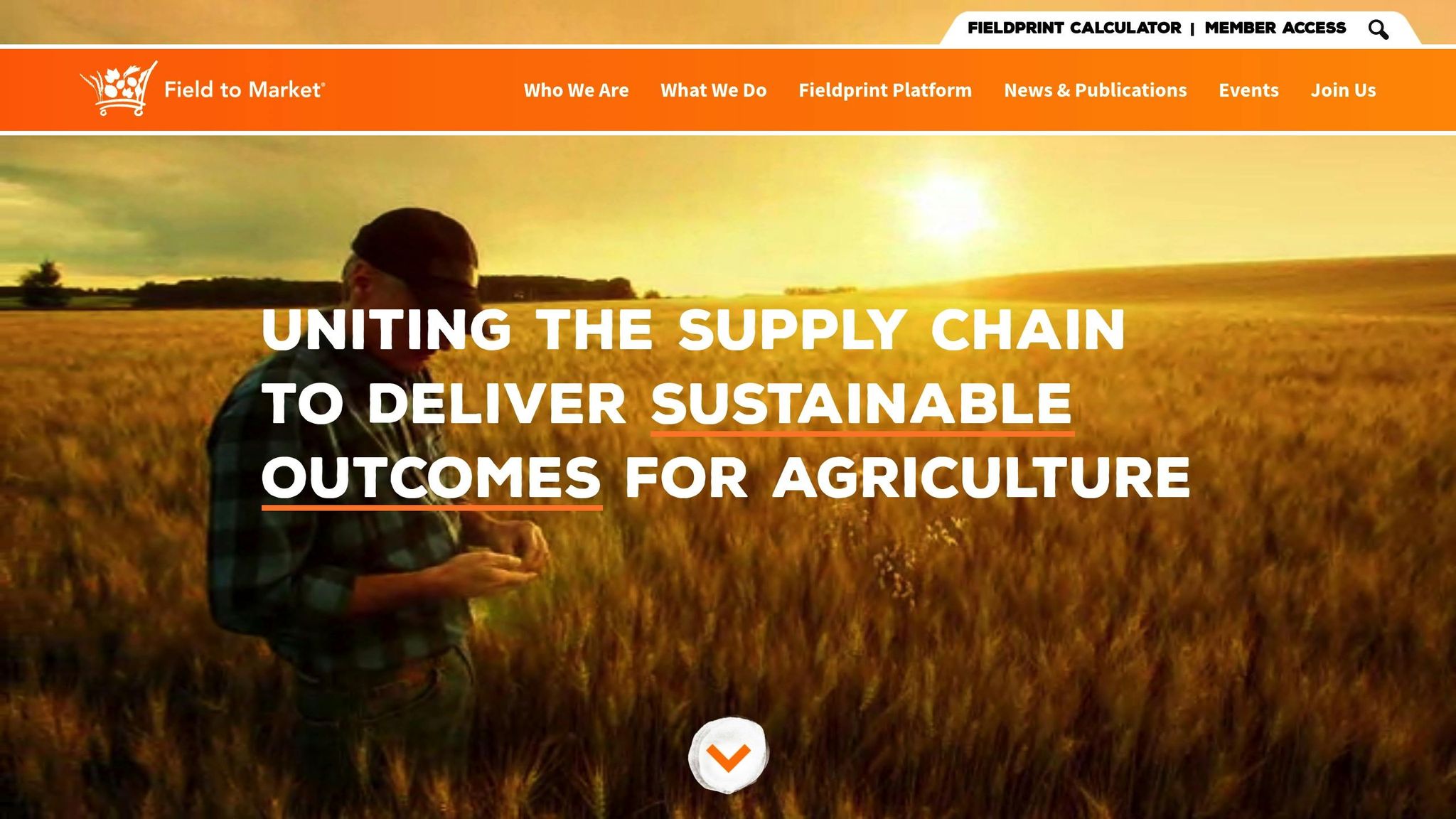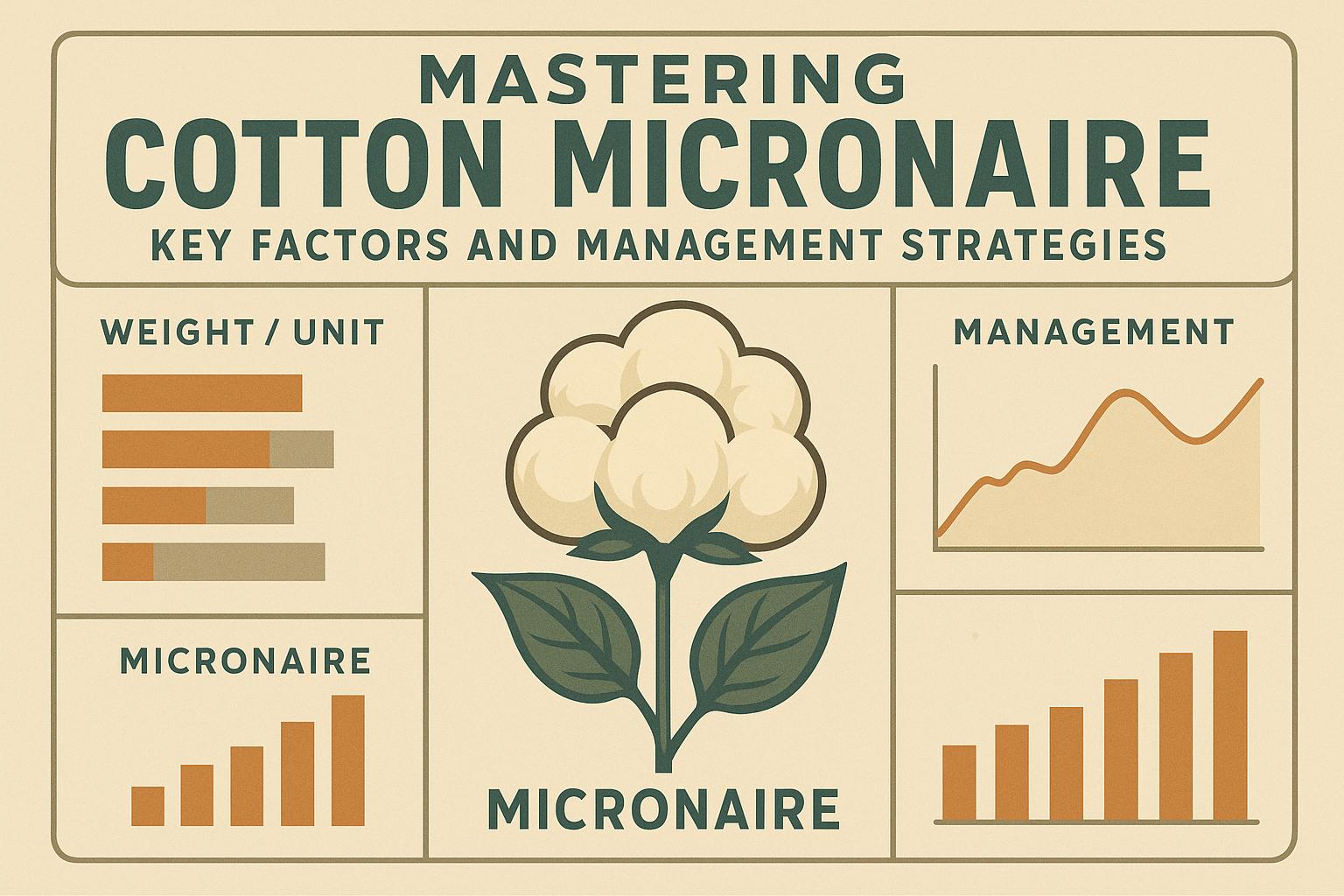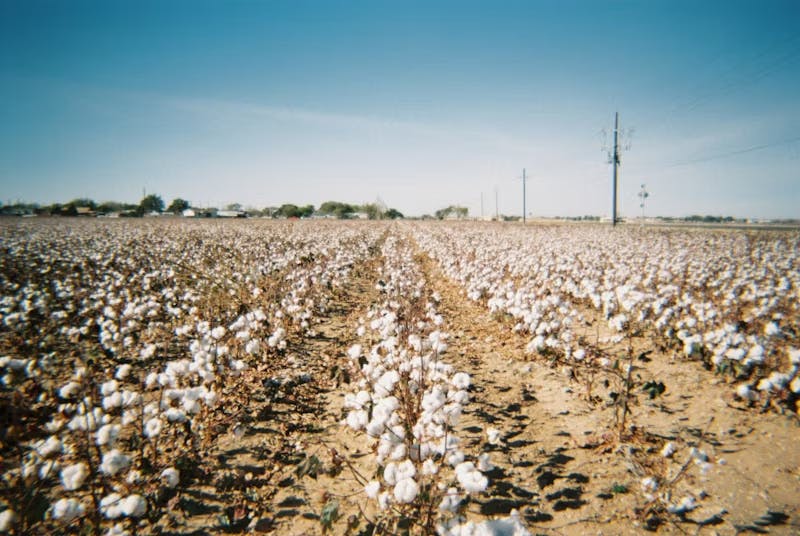The U.S. cotton industry thrives on partnerships that combine government resources, private sector innovation, and cutting-edge research. These collaborations fuel economic growth while addressing sustainability challenges across regions like Texas, California, and the Southeast. Key highlights include:
- Texas: Leading U.S. cotton production, Texas benefits from programs such as the Climate-Smart Initiative and regenerative farming projects. These efforts contribute $2.4 billion to the state’s GDP and support over 40,000 jobs.
- California: Known for premium cotton, California focuses on water conservation and regenerative agriculture, with funding from both federal programs and private sector investments. The industry generates $3.5 billion annually.
- Southeast: Initiatives like the U.S. Climate-Smart Cotton Program and Clemson University’s projects prioritize sustainable practices and market opportunities for underserved farmers, boosting rural economies.
These partnerships not only drive regional economic impact but also promote better resource management and rural development. Each region tailors its approach to local needs, creating a model for future agricultural collaboration.
Field to Market 2023 Collaboration of the Year: Collaborating for a Smarter Cotton Future

1. Texas Cotton Partnerships
Texas stands as the nation's leader in cotton production, contributing 40% of U.S. cotton and nearly half of the country's total output. This achievement is powered by well-coordinated public–private partnerships spread across the state's seven million acres of cotton farmland.
Partnership Models
Several key initiatives drive Texas's cotton success:
- The Texas Climate-Smart Initiative: This five-year pilot program brings together Texas A&M AgriLife, the Texas Soil and Water Conservation Board, Prairie View A&M University, and producer boards. It offers direct financial incentives to farmers for adopting practices like cover cropping, improved grazing methods, and better nutrient management.
- The U.S. Climate-Smart Cotton Program: This program works with over 1,000 farmers, covering more than one million acres, to promote sustainable farming practices across Texas.
- The U.S. Regenerative Cotton Fund (USRCF): Led by the Soil Health Institute, this initiative focuses on educating farmers about regenerative soil management techniques.
These programs not only encourage more sustainable farming but also generate economic opportunities for rural communities in Texas.
Economic and Social Impact
The economic benefits of these partnerships are substantial. For example, the Alliance Texas partnership has delivered over $40 billion in economic benefits to North Texas, including a $96 million investment by GE Transportation in North Fort Worth. Cotton production acts as a cornerstone for local economies, accounting for around 25% of all U.S. cotton production.
"Increased demand for cotton-based products directly supports local economies and the agricultural sector." – Kody Bessent, Plains Cotton Growers
Beyond economic gains, these initiatives help sustain rural communities by supporting local businesses and stemming population decline. The extensive network of cotton processing facilities ensures that these benefits ripple out to even the most remote areas.
Sustainability Outcomes
Sustainability is at the heart of Texas's cotton partnerships. Farmers have reported noticeable improvements in soil health and land management practices. Programs like the Climate-Smart Initiative focus on strategies such as cover cropping, integrating forestry, and refining nutrient management, all of which help farmers adapt to climate challenges and improve yield forecasts. The initiative's five-year duration also allows for valuable data collection on greenhouse gas reductions, soil carbon storage, and water efficiency.
Additionally, Texas cotton farmers are increasingly turning to precision agriculture technologies. These tools help optimize resource use while maintaining high productivity. By addressing financial barriers, partnership programs make these advancements accessible to smaller farms, ensuring that innovation benefits everyone. Texas's efforts serve as a model for similar programs in other regions, showcasing how collaboration can drive both economic growth and environmental progress.
2. California Cotton Collaborations
California's cotton industry thrives on partnerships that emphasize regenerative agriculture and soil health. In 2019, the state's cotton farms produced an impressive 439 million pounds of fiber, including 90% of the nation's extra-long staple cotton. This success stems from a mix of federal programs, state initiatives, and private investments, creating a strong foundation for research and innovation in the field.
Partnership Models
Collaborations in California's cotton industry revolve around promoting regenerative farming practices. One notable example is the U.S. Regenerative Cotton Fund (USRCF), which focuses on improving soil carbon levels while boosting farm profitability. This program highlights the potential of regenerative methods to achieve both environmental and financial gains.
Fibershed, another key player, showcases how partnerships can drive practical solutions. Its collaboration with Bowles Farming Company includes a 64-acre trial site developed alongside the Center for Regenerative Agriculture and Resilient Systems at Chico State University. This initiative demonstrates how academic institutions, nonprofits, and commercial farms can join forces to apply research directly in the field.
Private sector involvement has also played a crucial role, helping to introduce sustainable technologies more efficiently.
Funding Sources
California's cotton partnerships rely on a wide range of funding sources aimed at promoting sustainability. The U.S. Regenerative Cotton Fund benefits from contributions by major fashion and retail brands like The Ralph Lauren Corporate Foundation, Walmart Foundation, The VF Foundation, Levi Strauss & Co., Hearst Foundations, and Cotton Incorporated.
The USDA's Resilient Food Systems Infrastructure Program has also stepped in, awarding over $30 million in competitive grants through a cooperative agreement with the California Department of Food and Agriculture in December 2023. At the state level, the Healthy Soils Program supported Fibershed's demonstration project with Gonzales-Siemens Family Farm in spring 2020.
"We've learned a great deal in the last several years about challenges at all points in the supply chain. We appreciate the foresight and commitment of the USDA to strengthen our food systems at all points." - CDFA Secretary Karen Ross
Economic and Social Impact
California's partnerships deliver measurable economic benefits. Research conducted across 19 farms covering 108,000 acres revealed that soil health management systems reduced production costs by $53 per acre and increased net farm income by $150 per acre in cotton rotations.
Beyond financial gains, these collaborations tackle broader rural development issues. For instance, studies suggest that investing $27 million annually in land repurposing could generate $101 million per year for each community over a 30-year period. This approach could also create 407 new jobs annually, offering wages 67% higher than traditional farmworker roles.
Sustainability Outcomes
California's partnerships reflect the region's focus on water conservation and minimizing environmental impact. The USRCF has established benchmarks across over 2 million acres, offering farmers personalized soil health reports to track progress in carbon sequestration. The fund aims to remove one million metric tons of carbon dioxide equivalent from the atmosphere by 2026.
Water conservation is another critical achievement. Retiring cropland in buffer zones has the potential to reduce water usage by 2.18 cubic kilometers and cut nitrate leaching by 105,500 tons annually. In the San Joaquin Valley, where groundwater overdraft averages 2.3 cubic kilometers per year, these efforts could lower water use by 1.8 cubic kilometers annually.
"The Climate Smart Cotton Program brings together USDA with private industry resources to increase the production and demand for Climate Smart Cotton that will help the U.S. cotton industry meet the ten-year sustainability goals." - Jesse Daystar, Ph.D., vice president and chief sustainability officer for Cotton Incorporated
These initiatives highlight how California's partnerships balance environmental care with economic progress, setting an example for other regions facing water and resource challenges.
sbb-itb-0e617ca
3. Southeast Cotton Initiatives
The cotton industry in the Southeast is undergoing a transformation, driven by strategic partnerships that tap into the region's established infrastructure and experienced workforce. Global shifts in economic, social, and political landscapes have paved the way for new collaborative efforts centered on cotton production.
Partnership Models
Building on approaches seen in Texas and California, Southeast initiatives focus heavily on climate-conscious farming and collaboration across multiple institutions. Universities are playing a pivotal role, with their textile engineering programs bridging the gap between academic research and practical farming techniques.
One standout example is Clemson University's South Carolina Initiative, which brings together 27 partners to work on climate-smart commodity development. This initiative provides direct payments to farmers who adopt sustainable practices like cover cropping, reduced tillage, mulching, nutrient management, and prescribed grazing.
Another major effort, the U.S. Climate-Smart Cotton Program, spans states such as Alabama, Florida, Georgia, Louisiana, Mississippi, North Carolina, South Carolina, and Tennessee. Spearheaded by the U.S. Cotton Trust Protocol, this program leverages relationships within the apparel industry to open up better market opportunities for participating farmers.
Funding Sources
The USDA's Partnerships for Climate-Smart Commodities initiative has allocated $3.1 billion to 141 projects, benefiting many Southeast states. These programs are especially designed to support smaller and underserved producers by offering higher cost-share rates.
Farmers can receive up to three years of financial assistance for adopting practices like nutrient management and planting cover crops. Over the next five years, the program aims to assist more than 1,000 U.S. cotton farmers - many in the Southeast - in implementing sustainable practices across over 1 million acres.
To further encourage the adoption of climate-conscious methods, innovative financial tools are being rolled out across more than 30 states, including many in the Southeast. These efforts prioritize Tribal and Black farmers, leveraging private sector demand to strengthen markets for sustainable cotton production.
The Climate-Smart Agriculture Innovative Finance Initiative also provides financial support and technical assistance. Some projects cover 30% to 50% of the costs associated with adopting sustainable practices, making these methods more accessible to farmers.
Economic and Social Impact
These programs are delivering clear economic benefits while promoting fairness and equity. Among U.S. Cotton Trust Protocol growers, adoption rates for sustainable practices are impressive: 78% practice crop rotation, 56% use no-till or conservation tillage, and 62% incorporate cover crops.
Farmers are also seeing direct financial rewards. Take Jake Dodd, a cotton producer participating in BASF's e3 Cotton Program. He earned a $2.50 premium for every ginned bale of cotton enrolled in the program. By using cover crops, conservation tillage, and precision irrigation, Dodd has not only improved his farm's sustainability but also its profitability.
"As producers, we've been very poor storytellers about what we do. e3 cotton and other sustainability programs are a great way to let the world see what we do. To see we are sustainable and not killing the earth." – Jake Dodd, Cotton Producer
The Southeast is also making strides in supporting underserved communities. Programs tailored to small and minority farmers offer higher cost-share rates and technical assistance, ensuring these groups have equitable access to sustainability initiatives and their benefits.
The economic benefits extend beyond farms. The revival of the textile industry in the Southeast generated $2 billion in capital investments in 2015, helping the U.S. become the world's third-largest exporter of textiles. Between 2009 and 2015, textile exports grew by 39%.
Sustainability Outcomes
The Southeast’s cotton partnerships are also producing measurable environmental benefits. Among U.S. Cotton Trust Protocol members, 87% employ nutrient management strategies, and 75% utilize Integrated Pest Management (IPM) practices.
Mead Hardwick, a Louisiana Protocol grower, has seen firsthand the advantages of regenerative farming. By planting cover crops on more than half his land and using natural fertilizers along with soil moisture sensors, he's improved soil health and water management on his farm.
"The benefits of regenerative agriculture practices are tangible. After years of cover cropping, we're seeing significantly fewer weeds, less erosion, and increased water infiltration. The higher organic matter levels mean our soil is healthier and more resilient, and our crops can withstand more extreme weather." – Mead Hardwick, Louisiana Protocol Grower
The U.S. Climate-Smart Cotton Program aims to produce millions of bales of sustainable cotton over the next five years while significantly cutting carbon emissions. By tracking metrics like water usage, pesticide application, soil conservation, and worker safety, the program is ensuring measurable progress.
These efforts not only improve yields but also contribute to the long-term development of rural areas. From better carbon sequestration to enhanced water infiltration, the environmental gains extend beyond individual farms, benefiting entire communities. Reduced pesticide use and healthier soils are setting the stage for a more sustainable future in the Southeast.
Regional Comparison Analysis
When you dive into cotton partnerships across Texas, California, and the Southeast, it's clear that each region has its own playbook, shaped by its specific strengths and hurdles. Factors like funding, stakeholder involvement, and measurable outcomes highlight how these strategies promote sustainability and rural development. Let’s break down how funding structures, research, economic contributions, stakeholder engagement, and efficiency vary across these regions.
Funding Structure and Scale
Funding models differ significantly between regions.
- Texas: Home to a five-year Climate-Smart Initiative with a funding limit of $65 million. This initiative supports practices like cover cropping, forestry, grazing, and nutrient management.
- Southeast: The U.S. Climate-Smart Cotton Program secures $90 million and spans eight states. South Carolina also stands out with Clemson University’s $70 million initiative focused on climate-smart farming.
- California: Leverages a matching-funding model, capping at $85 million, which encourages non-federal contributions to amplify resources.
Research Investment and Innovation
In Texas, research partnerships are a cornerstone. Scientists at Texas A&M’s Department of Entomology received nearly $150,000 in matching grants from the USDA National Institute of Food and Agriculture and the Cotton Board. Their $294,000 three-year project uses CRISPR/CAS9 technology to improve cotton’s resistance to pests without relying on transgenes.
“Cotton Incorporated's support jumpstarted the project, demonstrating how industry collaboration converts modest investments into significant scientific advancements.” – Greg Sword, Ph.D., Texas A&M AgriLife Research scientist
Over the past three years, the Cotton Board’s Research and Promotion Program has generated over $4 million in competitive grants, with Texas benefiting greatly from these efforts.
Economic Impact and Producer Benefits
The economic contributions and benefits for producers vary by region, as shown below:
| Region | Economic Contribution | Producer Benefits | Scale of Operation |
|---|---|---|---|
| Texas | $2.4 billion to state GDP; 40,000+ jobs; $1.55 billion in labor income | $150 net income per acre | 6.2 million bales on 4.6 million acres (2019–2021) |
| Southeast | Not available | Not available | Over 1,000 farmers across 1+ million acres |
| California | Represents 85% of U.S. cotton production | $172.87 net income per acre | 140,800 hectares (approx. 350,000 acres) of Better Cotton |
One study by the United States Regenerative Cotton Fund (USRCF) analyzed 19 farms in Texas, Georgia, Mississippi, North Carolina, and South Carolina. It found that adopting soil health management systems reduced production costs by $53 per acre and increased net farm income by $150 per acre.
Stakeholder Engagement Models
The Southeast relies on broad stakeholder involvement. For example, Clemson University's South Carolina Initiative collaborates with 27 partners to advance climate-smart commodities, while the U.S. Climate-Smart Cotton Program connects with the apparel industry to expand market opportunities across eight states.
In Texas, institutional partnerships are central. Collaborations among Texas A&M AgriLife Research, the Texas Soil and Water Conservation Board, Prairie View A&M University, and producer boards highlight a strong teamwork model.
“We value our long-standing relationship with Texas A&M because the work would not be done without their expertise, demonstrating true partnership in supporting land-grant missions.” – Bill Gillon, president and CEO of the Cotton Board
Measurable Sustainability Outcomes
The Better Cotton program spans all three regions, licensing 280 farmers who harvested 140,800 hectares (approximately 350,000 acres) and produced 234,479 tonnes of Better Cotton during the 2022/23 season.
Meanwhile, the USRCF has set soil health and carbon benchmarks for over 2 million acres of cotton production as of February 2024. The program has provided 89 farmers with personalized soil health reports and aims to sequester one million metric tons of carbon dioxide equivalent by 2026.
Efficiency and Scalability
Each region has its own way of scaling efforts:
- The Southeast spans eight states with a $90 million investment, achieving broad geographic coverage.
- Texas maximizes research partnerships to turn modest investments into impactful results.
- California doubles its resources through a matching-funding model, enhancing efficiency.
The U.S. Cotton Trust Protocol ties these efforts together, aiming to represent more than half of U.S. cotton production by 2025. This initiative brings together brands, retailers, civil society, and the cotton industry to standardize how progress is measured.
Conclusion
Cotton partnerships in Texas, California, and the Southeast have delivered impressive outcomes. A standout example is the Texas Boll Weevil Eradication Program, which has generated $5.5 billion in net returns since 1996. As Ray Frisbie, an AgriLife Extension entomologist, put it:
"Before it started, there was a lot of debate among scientists about whether an eradication program was even feasible. But it is the single most successful insect elimination program in the U.S. It's a big victory."
The data highlights key strategies for building stronger partnerships in the future. University involvement has proven critical, with institutions like Texas A&M AgriLife, Clemson University, and the University of California system leading vital research and outreach efforts. Equally important is the commitment of producers. Woody Anderson, a cotton producer and chairman of the Texas Boll Weevil Eradication Foundation's board of directors, explained:
"The cotton producers paid the way, but their buy-in wasn't just the money to make the program go. The farmers had to work together because if adjacent farms did not participate, the program faltered. We've had great grower support."
These lessons point to clear priorities for advancing industry collaboration.
Looking ahead, future cotton partnerships could focus on several areas:
- Expanding soil health initiatives: Programs like the U.S. Regenerative Cotton Fund have shown how improving soil health can boost profitability. For example, this model lowered production costs by $53 per acre and increased net farm income by $150 per acre across 108,000 acres in five states.
- Standardizing frameworks: Tools like the U.S. Cotton Trust Protocol can help create consistency across regions and attract brand partnerships.
- Improving regional connectivity: Enhanced information-sharing platforms can strengthen collaboration between stakeholders.
Regional infrastructure remains a cornerstone of these efforts. Resources such as cottongins.org play a crucial role by offering directories of cotton gin locations, making it easier for producers, researchers, and industry partners to connect. This kind of coordination supports efficient, value-driven collaboration across the industry.
The cotton industry's partnership model serves as a guide for agricultural collaboration on a national scale. By combining producer initiative, research expertise, and long-term investment, these partnerships not only benefit individual farms but also drive broader economic growth and innovation across the sector.
FAQs
How do collaborations between government programs and private companies help make U.S. cotton farming more sustainable?
Collaborations between government initiatives and private companies are making a real difference in the future of U.S. cotton farming. These partnerships focus on science-driven practices that help farmers adopt more sustainable methods, like using less water, improving soil quality, and implementing climate-friendly techniques. Programs like the U.S. Cotton Trust Protocol play a key role by ensuring transparency and accountability in the cotton supply chain, while also giving farmers the tools to achieve their environmental targets.
On top of that, government funding - such as USDA grants - fuels research and development aimed at addressing climate challenges and improving resource efficiency. By blending public funding with private sector innovation, these collaborations not only bolster the environmental resilience of the cotton industry but also support its economic stability, creating benefits for farmers and their communities alike.
How do Texas, California, and the Southeast differ in their approaches to cotton production and sustainability?
Texas, California, and the Southeast each bring their own strategies to cotton production, shaped by their specific regional needs and conditions.
In Texas, which accounts for almost 40% of the nation's cotton output, the focus is on large-scale farming paired with regenerative agriculture. These practices aim to enhance soil health and build resilience, ensuring the land remains productive for future generations.
California takes a different route, leaning heavily on innovation. Programs centered on regenerative farming tackle challenges like climate adaptation and soil health. Collaborations between public and private organizations play a big role in driving these efforts forward.
In the Southeast, states like Georgia and Mississippi prioritize regional teamwork to refine sustainable practices and improve efficiency. Their initiatives often strike a balance between achieving high yields and protecting the environment.
These varied approaches highlight how different regions contribute to the growth and sustainability of the U.S. cotton industry.
How does the U.S. Climate-Smart Cotton Program help underserved farmers in the Southeast improve cotton production?
The U.S. Climate-Smart Cotton Program is stepping up to support farmers in the Southeast, particularly those from underserved communities, by providing technical guidance and financial assistance. The goal? To help cotton growers adopt farming methods that are kinder to the environment.
This initiative emphasizes reducing emissions, advancing climate-conscious agricultural practices, and opening up new market opportunities for cotton producers. By focusing on farmers from historically underserved backgrounds, the program not only promotes eco-friendly farming but also strengthens economic stability in these communities. Ultimately, it aims to increase cotton production while contributing to the growth and development of rural areas in the region.


